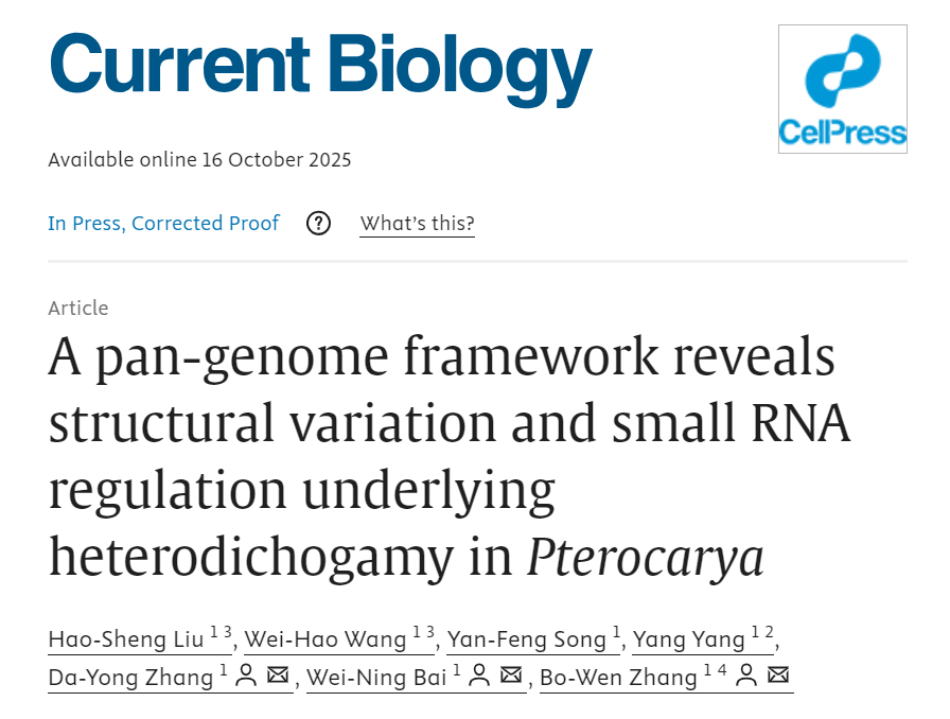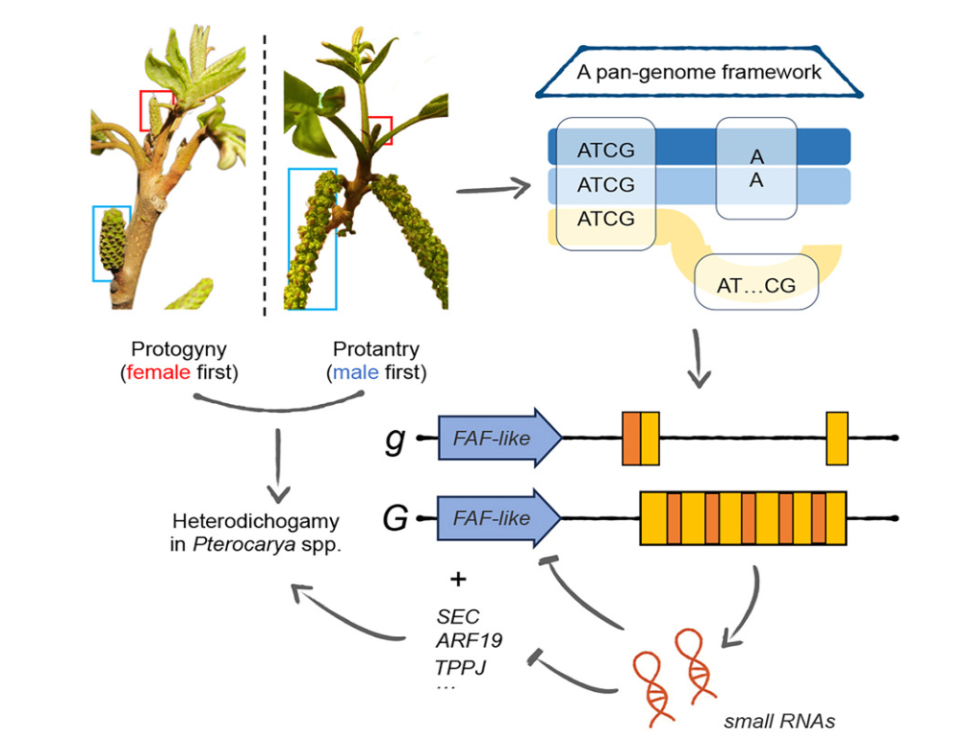Walnut Research Team from Beijing Normal University has Published a Study in Current Biology
Recently, the walnut team from the College of Life Sciences at Beijing Normal University has revealed the molecular regulatory mechanism of heterodichogamy in Pterocarya for the first time, providing new evidence for understanding the evolution of plant mating systems and demonstrating the significant roles of structural variations and small RNAs in the formation of reproductive traits. The related research results, titled A pan-genome framework reveals structural variation and small RNA regulation underlying heterodichogamy in Pterocarya, were published with Groh et al. in Current Biology. Liu Haosheng, a master’s graduate from the College of Life Sciences at Beijing Normal University, and Wang Weihao, a current doctoral student, are the co-first authors of the paper. Associate Professor Zhang Bowen, Professor Bai Weining, and Professor Zhang Dayong are the co-corresponding authors. Doctoral student Song Yanfeng and graduate Yang Yang are co-authors as well.


The abstract of the paper is as follows:
Heterodichogamy, characterized by reciprocal timing of male and female flowering, promotes disassortative mating yet remains poorly understood at the genomic level. Here, we investigated this mating system in Pterocarya, a genus within Juglandaceae, using a low-input pan-genome framework that integrates phased assemblies with population resequencing. We identified a deeply divergent 78-kb locus associated with mating morphs in P. stenoptera, marked by repeat-rich structural variants and containing a FAF-like gene linked to floral development. This region also produces small RNAs that potentially regulate key floral and hormonal pathways, suggesting pleiotropic trans-regulatory effects. Comparative analyses reveal that although the loci controlling heterodichogamy in Juglans, Carya, and Pterocarya are non-homologous, they appear to share convergent evolutionary solutions involving tandem repeats or transposable element (TE) insertions. Our study uncovers the genomic basis of heterodichogamy in Pterocarya and underscores the utility of pan-genome approaches for dissecting structural variation-associated traits.


